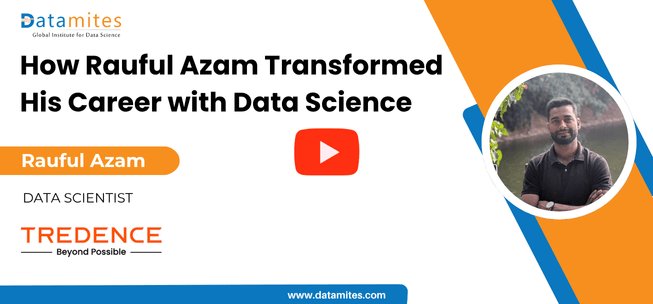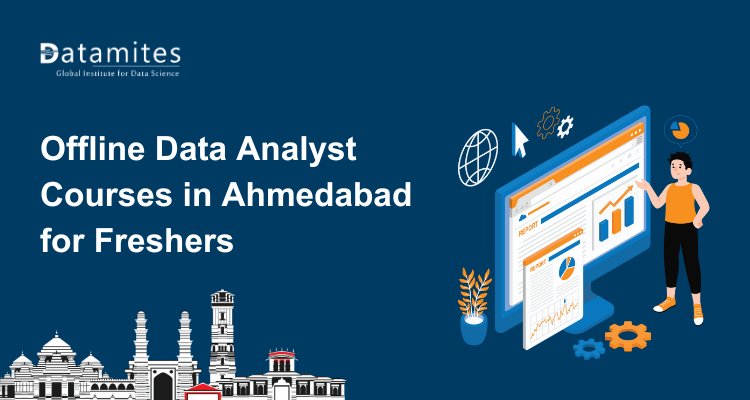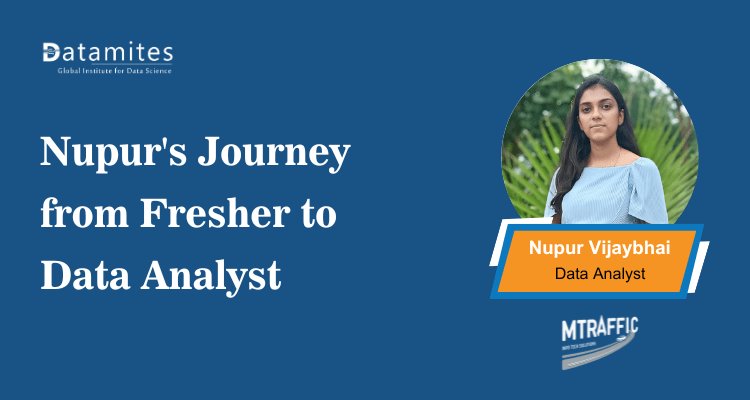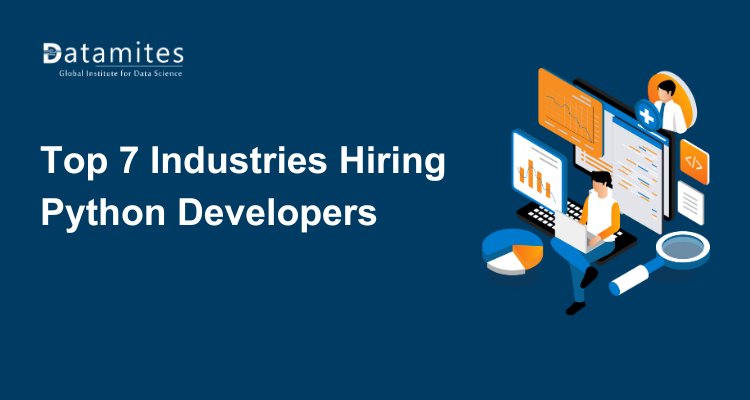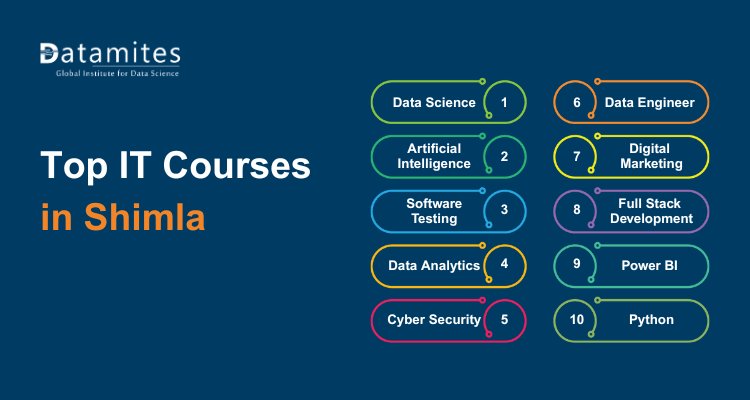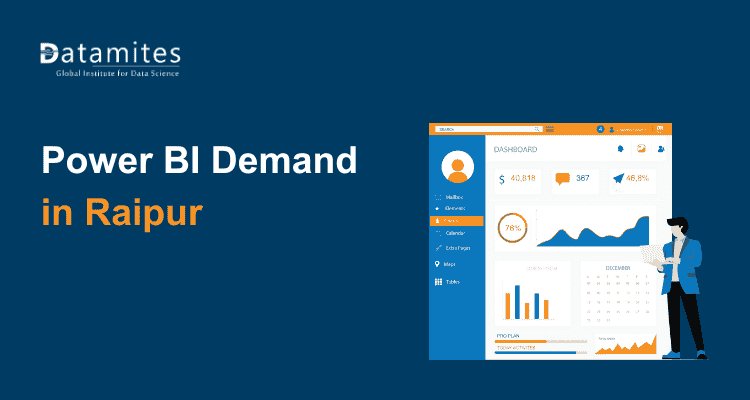How Rauful Azam Transformed His Career with Data Science
Rauful Azam successfully transitioned into a data science career by upskilling with the right tools, training, and determination. His journey showcases how focused learning and practical experience can lead to a rewarding role in the tech industry.
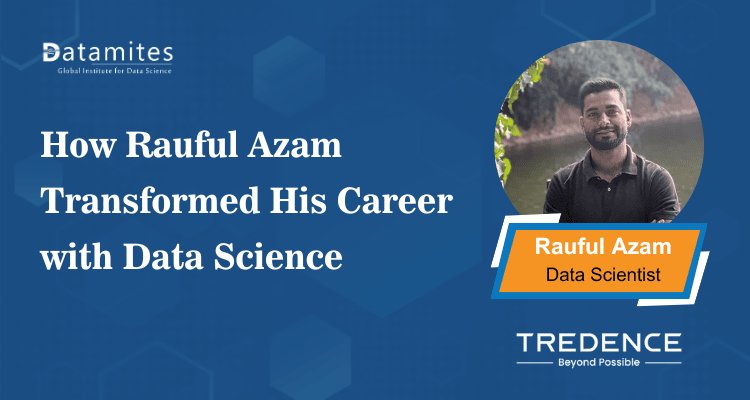
Breaking into data science can be daunting, especially for someone with limited programming skills or practical exposure. But Rauful, a 2020 computer science graduate, turned his career around with strategic learning and hands-on experience. Today, he works as a Data Scientist at Tredence, a leading data analytics and AI solutions company.
In this blog, we revisit a candid session hosted by DataMites with Rauful, who shares his data science journey—from joining a course during the pandemic to working on real-world projects in a data science role.
Charting Rauful’s Rise in Data Science with DataMites
From curiosity to career transformation, Rauful shares how DataMites played a pivotal role in shaping his journey as a successful Data Scientist at Tredence.
Q1. When did you join DataMites and how did your journey begin?
I joined DataMites Institute around October or November of 2020. Within two months of starting the course, I got a paid internship, and soon after, I converted it into a full-time job.
Q2. What was your educational background before entering data science?
I graduated in computer science in 2020. But honestly, I wasn’t very interested in programming during college. I used to memorize code before lab exams. It was only after deciding to move into data science that I began developing programming skills seriously.
Q3. Were you familiar with Python before joining DataMites?
Only a little. Python was part of our 6th or 7th semester curriculum, but I didn’t focus on it then. After enrolling at DataMites, I began learning and practicing it regularly, which made a big difference.
Q4. What was your exposure to machine learning before joining the course?
Minimal. I only knew that “machine learning” was a subject. Like most students, I’d memorize previous years’ question papers before exams. The course gave me proper direction.
Q5. How did you approach learning during the course?
Whenever a mentor taught a concept, like linear regression, I’d go online and explore how it’s used in real-world applications. Understanding industry use cases helped deepen my knowledge.
Q6. What have you worked on in your career over the past three years?
I’ve worked on various projects like:
- Price Elasticity: Understanding how price changes affect demand.
- Price Recommendations: Helping businesses choose optimal pricing strategies.
- Trade Promotion Optimization (TPO): Suggesting the best promotional calendars.
- Feedback Analysis: Extracting actionable insights from customer feedback.
- Chatbots and Recommender Systems.
- Table Q&A Systems: Automating data retrieval using natural language queries.
Q7. Can you explain what price elasticity means in practice?
Sure. Elasticity helps determine what happens to demand when price changes. For instance, if you increase the price by 1 unit, how will demand respond? We build models that give elasticity values to help businesses optimize for revenue or market share.
Q8. What tools or technologies do you use at work?
Primarily, we use GPT APIs, Hugging Face models, and tools for fine-tuning large language models. Most of our projects rely on Python, SQL, and deep learning libraries.
Q9. How is your team structured for fine-tuning models?
Generally, two people handle fine-tuning. We get the data, define the input/output format, and train the model using pre-trained weights from Hugging Face. It takes around 5–10 days to complete the process.
Q10. Are these projects used directly by businesses?
Yes, they’re very business-centric. For example, a Table Q&A system allows business users to ask questions like “What was my revenue in Q1?” The system converts the query into SQL, pulls the data, creates a chart, and adds insights—no analyst needed.
Q11. How do you calculate price elasticity technically?
When using linear regression, we can apply a log transformation. The coefficient then directly represents the elasticity. For other models like random forest or neural networks, we apply mathematical formulas: % change in demand ÷ % change in price.
Q12. Have you taken any courses after DataMites?
I completed Andrew Ng’s Machine Learning course and also a Deep Learning course. But after that, I mainly use Google and ChatGPT for learning—there’s a lot you can self-learn today.
Q13. What topics should beginners in data science focus on?
Start with Python, SQL, Statistics, Excel, and visualization tools like Tableau or Power BI, as these are essential across data analyst, data scientist, and machine learning engineer roles—once you’ve built this foundation, review at least five fresher job descriptions to identify commonly required skills and focus on learning those next.
Q14. How do you recommend someone start applying for data jobs?
Look at job descriptions for roles you're targeting. Find what skills show up repeatedly—those are your learning priorities. Even if you're not fully confident, start applying. Practice will help you improve faster.
Q15. How has the role of a data scientist evolved in your experience?
Earlier, people fine-tuned summarization models manually. Now, with tools like GPT, it’s about writing good prompts. You don’t always need to fine-tune models anymore—just crafting the right prompt gives great results. Prompt engineering is becoming key.
Refer these articles:
- Cracking into Data Science: Kowshik’s Inspiring Journey
- Breaking Into Data Science: Ankita’s Story of Success
- Khushi J’s Leap Into Data Science: A Story of Self-Belief
What We Can Learn from Rauful’s Rise in Data Science
His journey from learning the fundamentals to securing a role at Tredence offers valuable insights for every aspiring data scientist.
Started with Limited Coding Knowledge
Rauful had minimal programming experience when he began but gradually improved through consistent practice.
Hands-On Experience Made the Difference
Internships and real-time projects helped him apply what he learned and gain industry-relevant skills.
Went Beyond the Course Content
He explored real-world use cases online to better understand concepts taught in class.
Project-Based Learning Was Crucial
Projects like price optimization, feedback analysis, and chatbots helped him build confidence and showcase his skills.
Focused on Core Skills First
Mastering Python, SQL, statistics, Excel, and data visualization tools formed the foundation of his learning.
Adapted to Industry Tools
He used advanced tools like GPT APIs and Hugging Face models, emphasizing the importance of staying current with trends.
Promoted Continuous Learning
After completing courses, he relied on self-learning through platforms like Google and ChatGPT.
Worked in a Collaborative Environment
Model fine-tuning tasks at his company were handled by small, focused teams—usually just two people.
Applied Before Feeling “Fully Ready”
He encouraged others to start applying for jobs early and use interviews as learning opportunities.
Proved Career Growth Is Achievable
With discipline and the right learning path, Rauful progressed from a fresher to a Data Scientist at Tredence in just a few years.
Refer to these articles:
Rauful's journey from a hesitant programmer to a seasoned data scientist is inspiring—and deeply instructive. It emphasizes the importance of discipline, continuous learning, and aligning technical skills with business needs. If you’re just starting out, his story is proof that with the right mindset and approach, it’s entirely possible to break into and grow in the field of data science.
If you’re planning to transition into a data science career, there’s no better time than now to get started. According to the IMARC Group, the global data science platform market stood at USD 15.2 billion in 2024 and is expected to surge to USD 144.9 billion by 2033, with a staggering CAGR of 27.08% from 2025 to 2033. This explosive growth is being fueled by the exponential rise in digital data across industries. To stay relevant and competitive in this evolving landscape, it’s essential to equip yourself with hands-on skills, real-world exposure, and reliable placement support.
Just like Rauful—who successfully transitioned into a Data Scientist role at Tredence—you too can fast-track your journey with the right guidance and training. Enrolling in a trusted data science training in Chennai, Bangalore, Hyderabad, Mumbai, or Delhi can pave the way for a rewarding career in tech.
DataMites is one of the leading names in Data Science, AI, Machine Learning, Python Programming, and Data Analytics training. With accreditations from IABAC and NASSCOM FutureSkills, DataMites offers expert-led instruction, real-time project experience, and strong placement support to help learners make a smooth transition into data-driven roles.
Whether you prefer offline data science classes in Chennai, Bangalore, Hyderabad, Pune, Ahmedabad, Coimbatore, and Mumbai or need the flexibility of online learning, DataMites caters to learners from all walks of life. Its practical, industry-relevant curriculum empowers fresh graduates, career switchers, and working professionals to succeed in the world of data science—just like Rauful.
